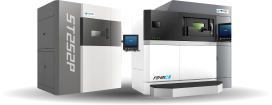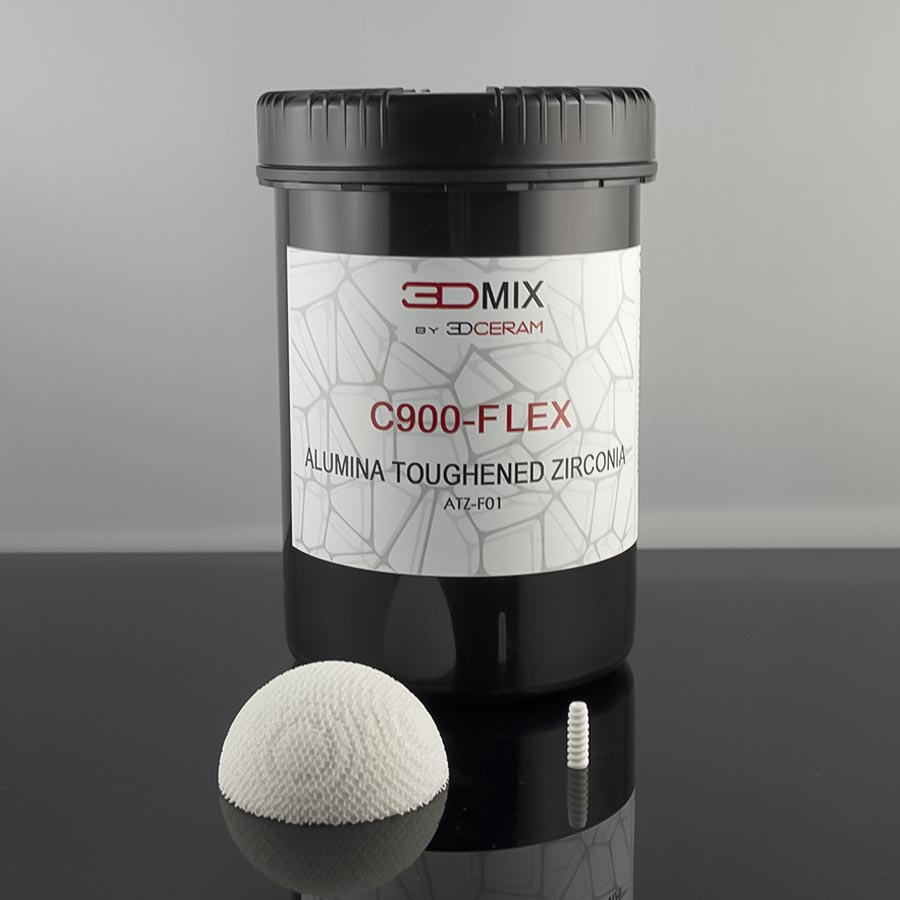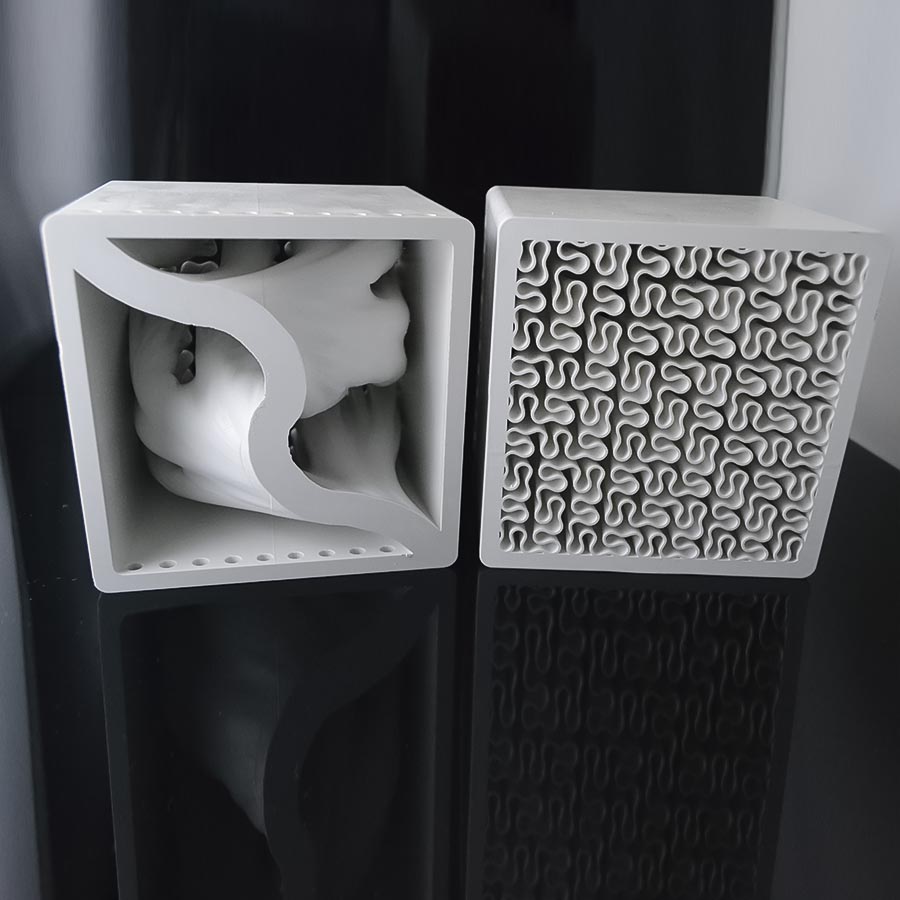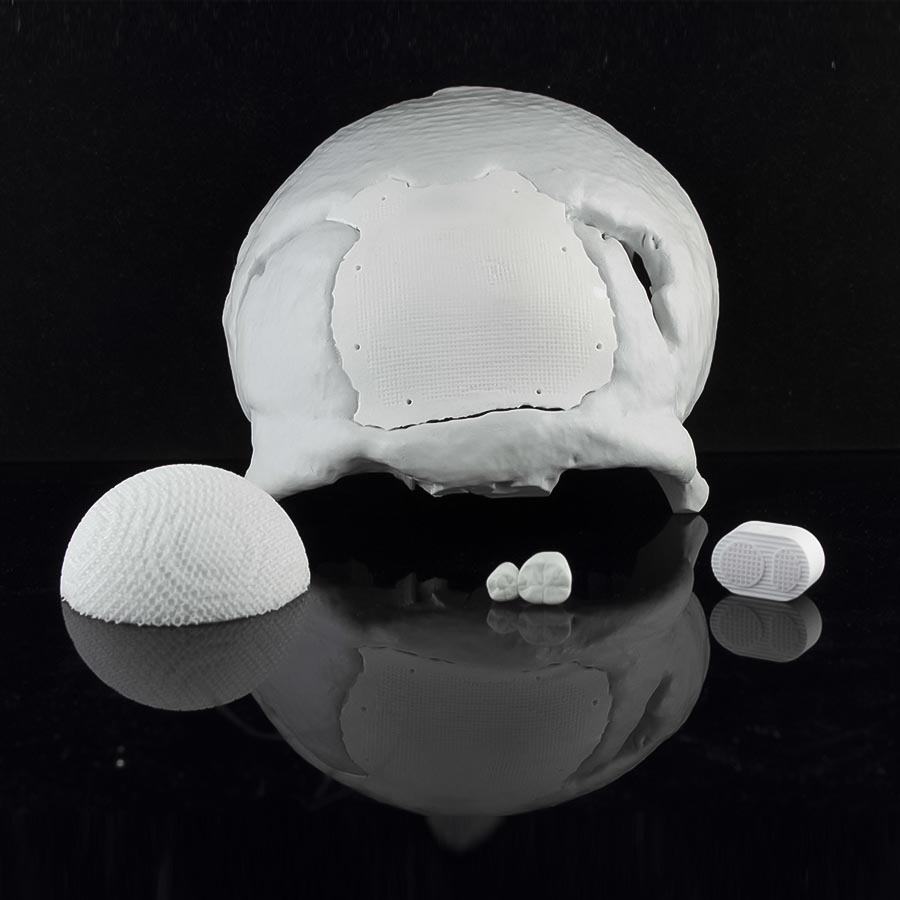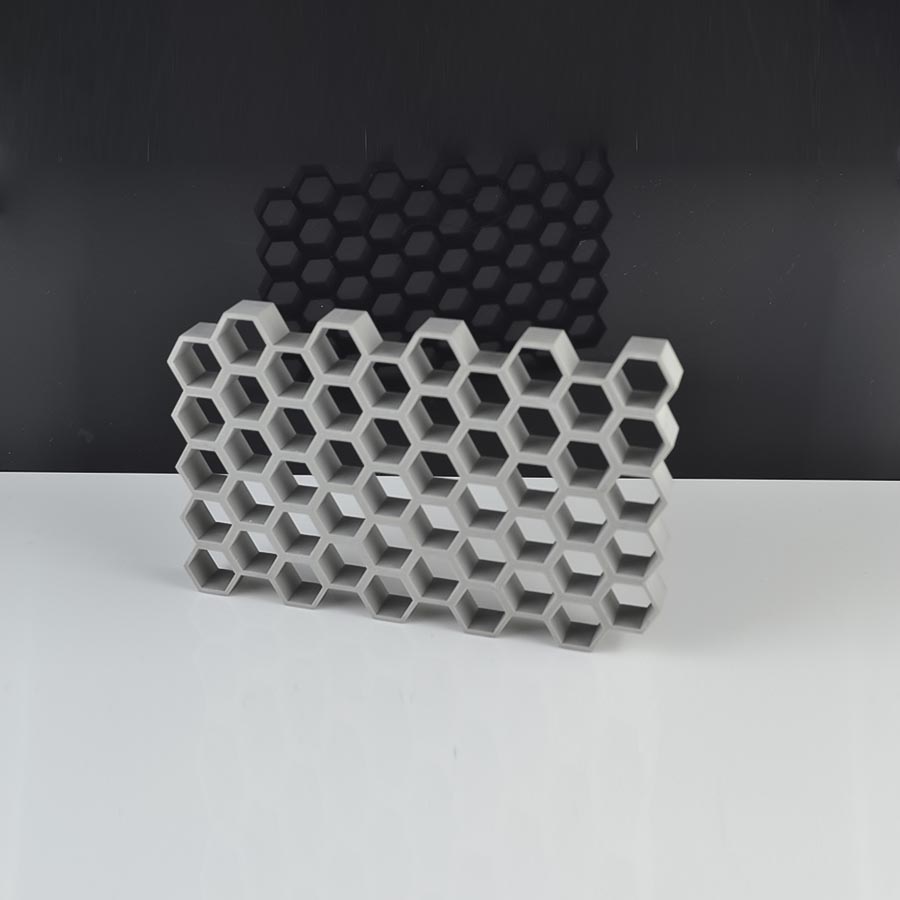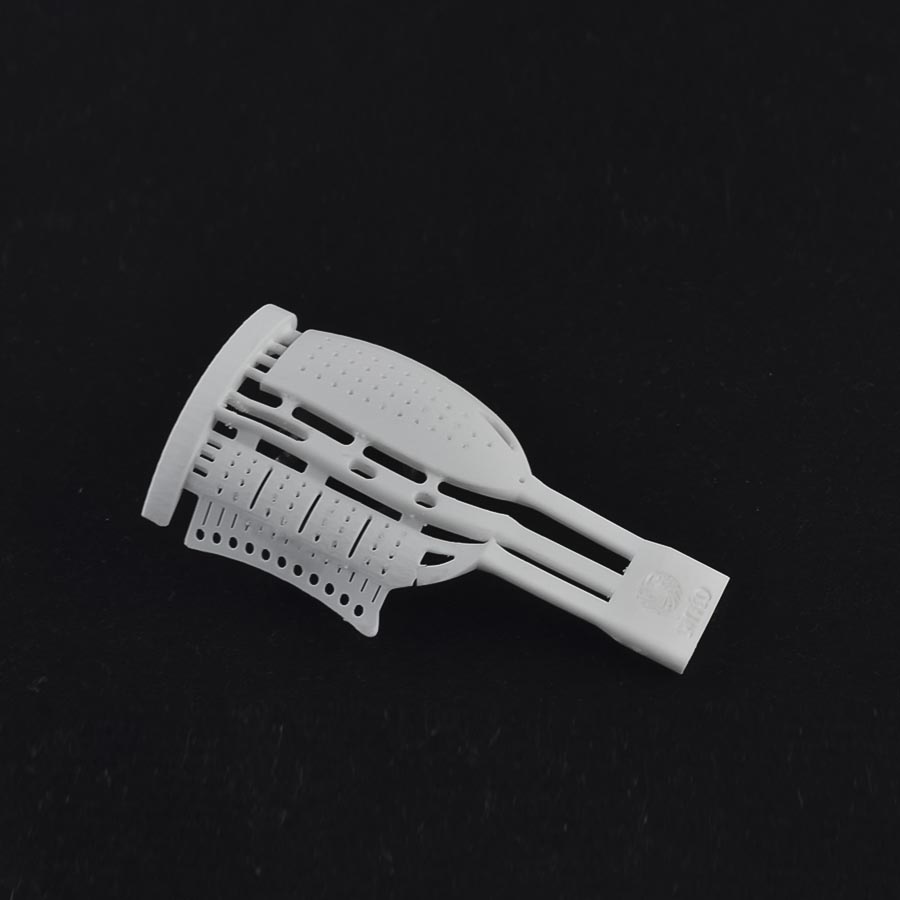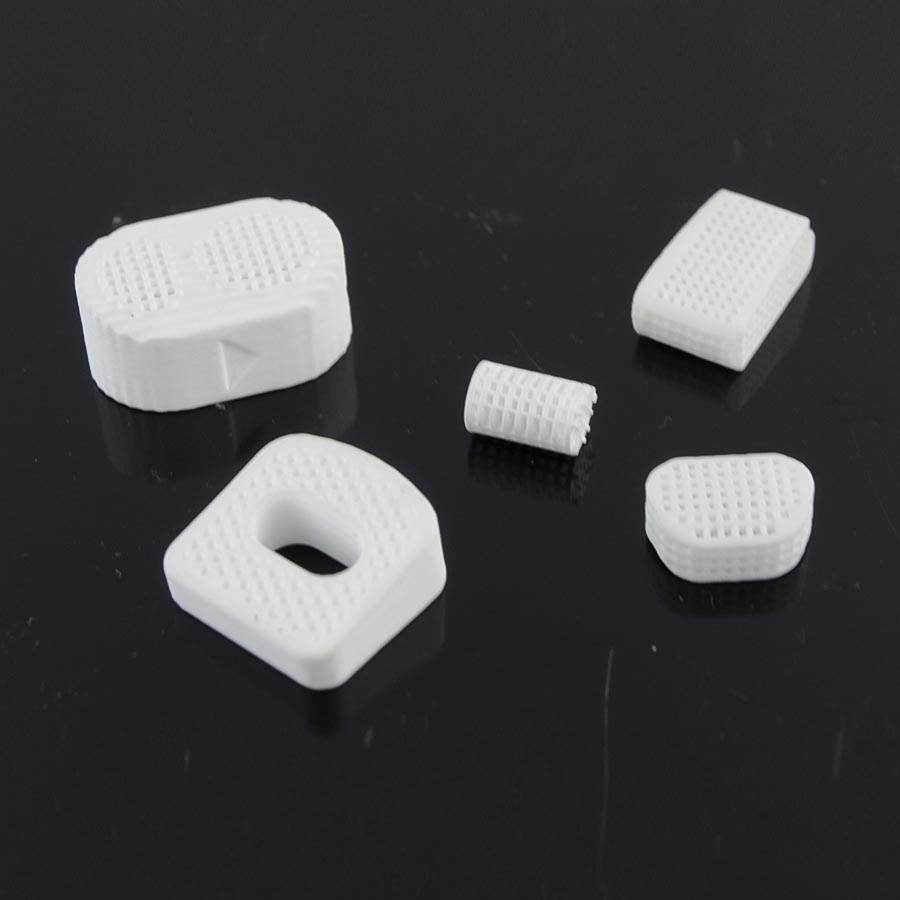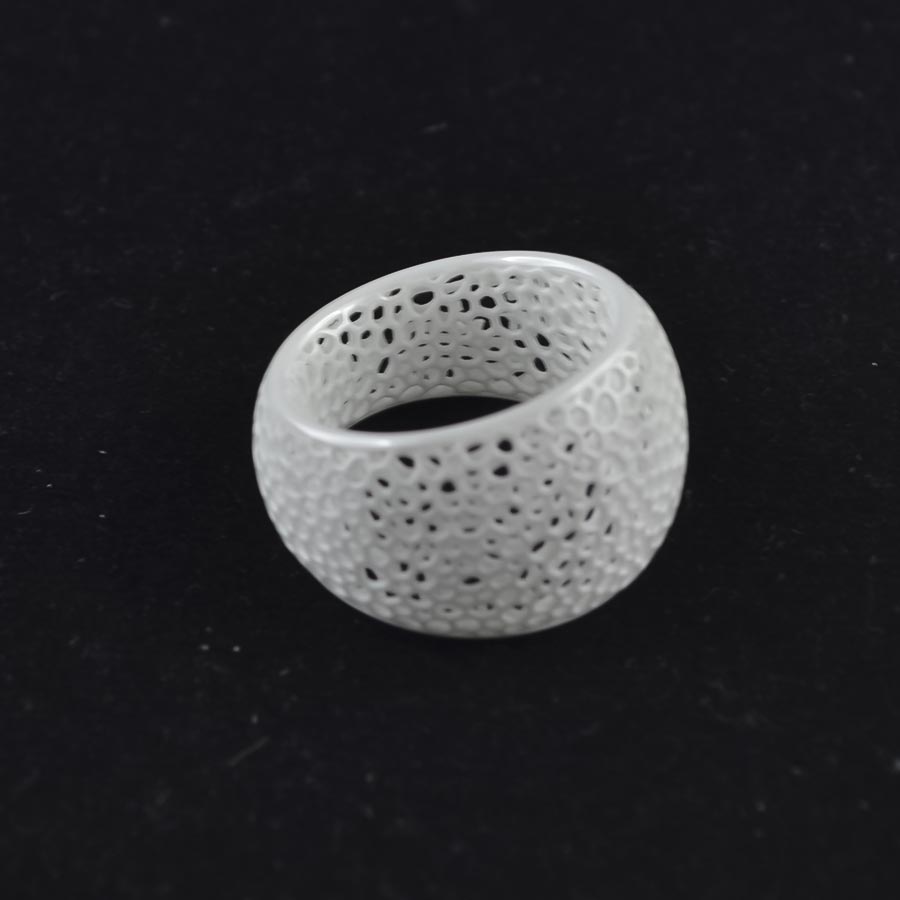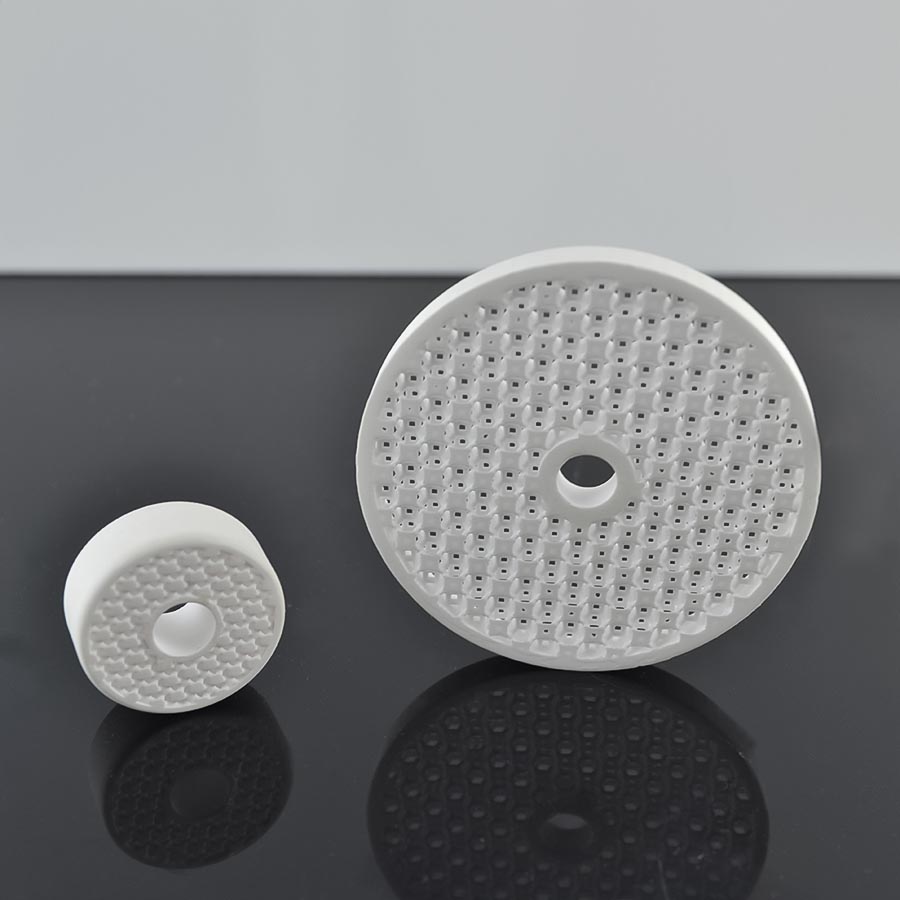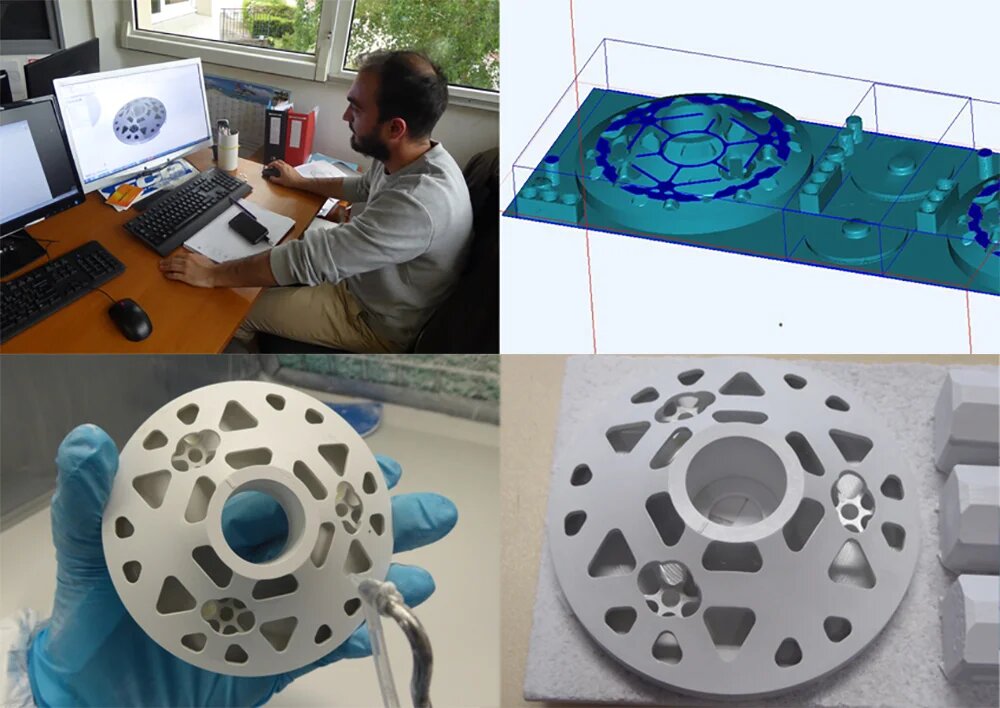



The C101 EASY LAB is a 3D printer designed for research centers and universities, offering easy usability, optimized accessibility, and the ability to print with the right amount of ceramic. The C101 EASY LAB is a printer dedicated to research and development, with easy usability and optimized accessibility. The printer uses ceramics such as zirconia, alumina, and silicon nitride.
- Printing technology – SLA Ceramic
- Printing material – Oxid and non-oxid ceramics
- Printing area – 3.9×3.9×5.9 in / 100×100×150 mm
C101 EASY LAB
The 3D printer to develop & prototype then scale up on the C3600 ULTIMATE
Details
| Brand | |
|---|---|
| Country of origin | France |
| Weight | 750 kg |
| 3D Printer Dimensions | 940 x 1060 x 1826 mm (LxPxH) |
| Build Volume | 3.9×3.9×5.9 in / 100×100×150 mm |
| Printing technology | SLA |
| Layer thickness | |
| Printing material | Ceramics |
| Light source | UV Laser |
| UV Wavelength | |
| Laser spot diameter | |
| Electrical requirements | |
| Electric power | 2 kW |
| Optimum indoor operation temperature | 20-25 °C, 68-77°F |
| Maximum room temperature variation | 1°C/hour |
| Relative humidity | |
| Compressed air | 6 bars dry |
| Hybrid option | Available |
| Client Operating System | Web Dashboard |
| Guarantee | 12 months |
Description
This printer is user friendly, has open parameters, stereolithography laser, free link support technology, a pressure tank (1,5 liter) feeding to provide the material quantity required for an optimized run 100*100*150, peristaltic pump for flowrate control to manage quantity of printed ceramic slurry, accessible for persons with reduced mobility, easy scale up to C3600 (600 x 600 x 300 mm)
3D PRINTING WITHOUT SUPPORTS: CERAMIC SLA
Top-down stereolithography allows for printing without supports by building the part from the bottom up as the tray moves down. 3DCeram is capable of producing precise and detailed parts consistently.
The printing material is fed into a cartridge at the start of the printing cycle, making it easy to refill the cartridge during printing.
Additionally, 3DCeram’s top-down stereolithography process is suitable for a wide range of materials, including ceramics and advanced composites, enabling the production of parts with high mechanical and thermal properties.
This technology is particularly well-suited for applications in industries such as aerospace, automotive, and medical, where high-performance and precise parts are required.


C101 EASY LAB: THE POSSIBILITY TO DEVELOP YOUR OWN PROCESS
Open parameters
- Printer dedicated to research centers and universities for research and development
Optimization of the printing precision elements (mechanical and optical)
Accessible to people with reduced mobility
Easy to use
Printing with the right amount of ceramic
60 mL of ceramic is enough to start a print or 10 mL with the SAM (Small Amount of Material) option
180 mL, 360 mL, 600 mL and 920 mL cartridges available
Optimized accessibility



APPLICATION
BIOMEDICAL

AEROSPACE

FOUNDRY CORES

INDUSTRY

MATERIALS
Alumina (AI203)
Used more often than any other advanced ceramics. Very good mechanical resistance,electrical resistance, high hardness, corrosion and wear resistance, high operating temperature and chemically and bio- inert.
Zirconia (ZrO2)
Useful in surgical instrumentation and odontology prosthesis (crowns and bridges),porous coating dentistry: material with very good mechanical properties, great hardness,good wear resistance, corrosion resistant.
Silicon Nitride
One of the hardest and most thermally resistant ceramics. The main characteristics of silicon nitride are: low density, excellent resistance to thermal shock, excellent resistance to wear, and low thermal expansion
coefficient.
Cordierite
Cordierite is a magnesium alumina silicate with chemical formula 2MgO.2Al2O3. 5SiO2 Cordierite can be used due to low thermal conductivity and low expansion coefficient, resistance to heat and low dielectric loss.
Aluminium Nitride
The main characteristics of aluminium nitride are: high thermal resistance, excellent electrical insulation and good mechanical strength. Main application of this material is electronic industry
Zirconia 8Y
This material has excellent ionic conductivity and heat insulation properties. Main application of this ceramic material is manufacturing of solid fuel cells.
MASS CUSTOMIZATION, MOVE TOWARD WITH ADDITIVE MANUFACTURING
The versatility of 3D printing technology offers unique benefits across various industries, making it an intriguing and adaptable tool.
The use of 3D printing for technical ceramics introduces new possibilities for applications by optimizing designs and overcoming limitations inherent in traditional production methods such as machining.
With a strong background in additive manufacturing, 3DCeram is well-equipped to understand and meet the diverse needs of different customers. Drawing from our experience, we have honed our expertise to advance the technology and address industrial demands, focusing on developing a mass production method that is also customizable.
To meet these industrialization requirements in 3D printing technical ceramics, we have introduced the C3600 ULTIMATE, an industrial printer designed to handle large parts or produce significant quantities of small, uniform, or diverse parts on its 600x600x300 mm build platform.
In the journey towards industrial-scale production, the development phase is crucial. This is why the C100 EASY FAB complements the C3600 ULTIMATE, providing a stepping stone to help you progress towards your goals effectively.
Additional equipment
- Installation of post-processing models – allows you to easily remove unpolymerized paste.
- Furnaces for removing photopolymer (in oxygen and nitrogen environment) and sintering of parts (in a professional environment)
Related products
-
COMPARE
Alumina Toughened Zirconia 3D Printing Paste
OXIDE CERAMICS Alumina Toughened Zirconia, known for their biocompatibility and their resistance toAlumina Toughened Zirconia 3D Printing Paste
OXIDE CERAMICS
Alumina Toughened Zirconia, known for their biocompatibility and their resistance to wear and thermal shock, are recommended for biomedical and industry applications.
The ceramic ATZ combines both Alumina (20%) and Zirconia (80%) ceramics in one. The mix of these two combined offers several properties. -
COMPARE
Alumina 3D Printing Paste
OXIDE CERAMICS Al2O3, basic material being useful in many applications for technical ceramics, goodAlumina 3D Printing Paste
OXIDE CERAMICS
Al2O3, basic material being useful in many applications for technical ceramics, good mechanical behavior in the high temperatures, the good thermal conductivity, the big electric resistivity, the great hardness, the good wear resistance, the chemical slowness. -
COMPARE
Aluminium Nitride 3D Printing Paste
NON OXIDE CERAMICS The high mechanical properties of this ceramic, combined with high thermal conduAluminium Nitride 3D Printing Paste
NON OXIDE CERAMICS
The high mechanical properties of this ceramic, combined with high thermal conductivity and electrical insulation, are highly recommended in electronics industry. -
COMPARE
Fused Silica 3D Printing Paste
OXIDE CERAMICS Silice ceramics suit foundry cores and optical applications requirements.Fused Silica 3D Printing Paste
OXIDE CERAMICS
Silice ceramics suit foundry cores and optical applications requirements. -
COMPARE
Cordierite 3D Printing Paste
OXIDE CERAMICS This low CTE and thermal conductivity ceramic is wear resistant. It suits vacuum appCordierite 3D Printing Paste
OXIDE CERAMICS
This low CTE and thermal conductivity ceramic is wear resistant. It suits vacuum application. -
COMPARE
Hydroxyapatite 3D Printing Paste
OXIDE CERAMICS Hydroxyapatite/TCP: material used in the biomedical applications for the manufactureHydroxyapatite 3D Printing Paste
OXIDE CERAMICS
Hydroxyapatite/TCP: material used in the biomedical applications for the manufacture of the osseous substitutes, chemical composition close to bone. -
COMPARE
Silicon Nitride 3D Printing Paste
NON OXIDE CERAMICS The Silicon Nitride is among the hardest and most resistant technical ceramics.Silicon Nitride 3D Printing Paste
NON OXIDE CERAMICS
The Silicon Nitride is among the hardest and most resistant technical ceramics. It has also a high resistance to thermal shocks, to wear and corrosion (liquid and gas). Its application is found in the components of pumps and valves, semiconductors among others. -
COMPARE
Silicore 3D Printing Paste
OXIDE CERAMICS Silicore is a ceramic formulation specifically developed for foundry cores. It is foSilicore 3D Printing Paste
OXIDE CERAMICS
Silicore is a ceramic formulation specifically developed for foundry cores. It is formulated on a silica basis and has a high mechanical resistance. It is a porous ceramic enhanced the leachability even when it comes to complex shapes. -
COMPARE
Tricalcium Phosphate 3D Printing Paste
OXIDE CERAMICS TCP or Tricalcium Phosphate is a material often used for implants in the medical fieTricalcium Phosphate 3D Printing Paste
OXIDE CERAMICS
TCP or Tricalcium Phosphate is a material often used for implants in the medical field, especially to recreate parts close to the structure of a spine. -
COMPARE
Zirconia 3Y 3D Printing Paste
OXIDE CERAMICS ZrO2, material with the very good mechanical properties cold, being able to be colorZirconia 3Y 3D Printing Paste
OXIDE CERAMICS
ZrO2, material with the very good mechanical properties cold, being able to be colored for applications in jewelry, excellent mechanical properties in the high temperatures, the weak thermal conductivity at room temperature, conductor in T> 1000°C, great hardness, good wear resistance, good chemical slowness, good resistance in the attacks of metals. -
COMPARE
Zirconia 8Y 3D Printing Paste
OXIDE CERAMICS 8 mol% yttria-stabilized zirconia is mainly developed for fuel cell applications.Zirconia 8Y 3D Printing Paste
OXIDE CERAMICS
8 mol% yttria-stabilized zirconia is mainly developed for fuel cell applications. -
COMPARE
C3600 ULTIMATE
The mass production’s solution. The 3600 is the largest industrial printer in the 3DCeram productC3600 ULTIMATE
The mass production’s solution. The 3600 is the largest industrial printer in the 3DCeram product line with a build area of 600x600x300mm. The Ceramaker 3D printer allows you to produce products with high surface quality, the roughness of which does not exceed 2 microns.

